Phase 4 — Mastering the Gentleman Spy Skill Set
Lesson 7 — Poker and Gambling
LESSON 7: Poker and Gambling

When we think about a Gentleman Spy, we automatically think of James Bond, dressed in a tuxedo, at the casino. 007 and gambling have gone together since Ian Fleming first published Casino Royale in 1953. From his introduction at a roulette table in the first book, through the films, we know that Bond knows his way around a casino and is an expert card player. Reality sometimes follows fiction, and real-life spies have taken to poker as their game of choice, from backroom games in third world countries to the finest casinos around the world.
While Bond has played everything from roulette to chemin de fer, the focus here will be on Texas hold ‘em. Hold ‘em is comparatively easy to learn, is the most popular game in US casinos, and is featured in the World Series of Poker and World Poker Tour. Whether you want to become a professional, you just want to play with friends, or you want to recoup the cost of the fancy cruise or trip to Vegas by spending a few hours at the tables, this guide will help you get there. You’ll learn the basics of the game, and a clear path to becoming a profitable mid-stakes poker player.
Basics of Texas Hold'em Poker

- The dealer is marked with a dealer button that rotates clockwise through the players (whether you’re playing a home game or with a table dealer at a casino).
- The two players to the left of the dealer put in blind bets. The player directly to the left of the dealer puts in the small blind, and two places to the left is the big blind.
- Every player is dealt two cards face down. These are called pocket or hole cards.
- The action (first move) starts with the player to the left of the big blind. They can fold, call the bet, or raise the bet.
- Other players follow suit, folding, calling, or raising.
- When the first round of betting is complete, the dealer deals three cards face up in the center of the table (board). This is the flop.
- These cards are community cards. Everybody is using their cards, plus the community cards, to make the best hand possible
- After the flop there is another round of betting. Each player can check, bet, or fold.
- The dealer deals one more card, face up on the board. This is the turn.
- One more round of betting.
- The dealer deals the final card, face up on the board. This is the river.
- Final round of betting.
- The remaining players show their cards. The winner is the one with the best five card hand made up from their pocket cards plus the cards on the board.
- In rare cases, the five cards on the board will be the best possible hand. If this happens, the remaining players split the pot.
Poker Hand Rankings
Now that you know the basics of game play, let’s look at how the various hands rank.
From high to low:

Royal Flush — An Ace-high straight of one suit.

Straight Flush — A straight of entirely one suit.

Four-of-a-Kind (Quads) — Four cards of the same rank.

Full House (Full Boat, Boat) — Three-of-a-kind and a pair. The example provided would be called “Queens over Aces” or “Queens full of Aces”.

Flush — Five cards of the same suit.

Straight (Run) — Five cards of sequential rank. Note that in holdem, Aces can be high or low.

Three-of-a-Kind (Trips, Set, Triplets) — Three cards of the same rank.

Two Pair — Two cards of the same rank and another two cards of the same rank. The example hand would be called “Kings and Queens”.

One Pair — Two cards of the same rank.

High Card — When you don’t have any of the above, your highest card determines your hand.
Now that the basic ideas have been laid out, it’s time for more detail. You’ll need to know what the best and worst starting hands to play are — you do not want to play every hand you’re dealt. Additionally, your position at the table can help or hurt you depending on where you are — you’ll need to adjust your play accordingly. Knowing these basics, it’s time to get serious. The following progression will take you from a complete novice to a winning player — provided you put in the time and effort to learn the intricacies of the game.
What You Will Need
- Winning Low Limit Hold'em by Lee Jones
- Small Stakes Hold’em: Winning Big With Expert Play by Sklansky, Miller, and Malmut
- Hold’Em Poker for Advanced Players by Sklansky and Malmut
- Hold’em software (Advanced Poker Training, Poker Genius, and Poker Snowie are all highly rated)
Your Training Progression
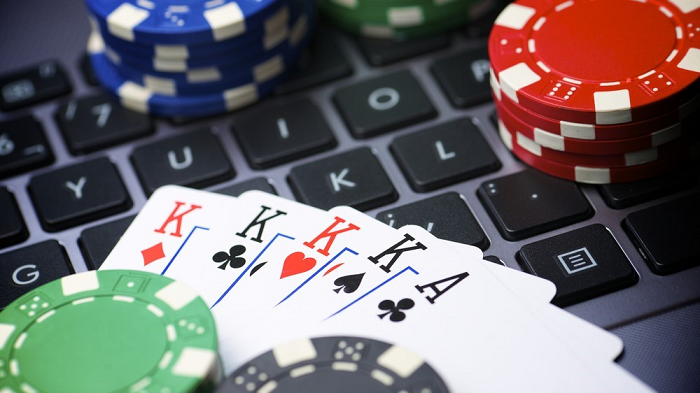
- Before you ever start playing for real, you’ll need to memorize the starting hands. These vary depending on your position at the table. While you’ll end up diverging from the recommendations eventually, the chart in Winning Low Limit Hold’em will give you a huge advantage over most low-limit players.
- Start playing Advanced Poker Training, Poker Snowie, or other training software. These allow you to play 200–500 hands per hour and will help develop your ability to weed out the correct starting hands unconsciously. This will also start to give you a good feel for normal game play so you’re not dumbfounded when you start playing for real.
- After playing a few thousand hands on the simulator, it’s time to start understanding the rest of the game. Read the rest of Winning Low Limit Hold’em, and keep playing the simulator.
- Start playing for real. The best way to start is at the $3/6 or $4/8 tables. This is inexpensive enough to be able to play a lot of poker, but it also keeps out most of the crazy play seen at the lower limit tables. Remember, your goal is to move up and learn to play correct poker, and you won’t be able to really do that against the idiocy of the cheaper tables.
- Because the rake (the cut that the house takes) is so high in the smaller stakes games, you need to move up aggressively. As soon as you’re choosing your starting hands unconsciously, not playing hands you shouldn’t play, and feel like you’re one of the best few at the table, it’s time to start moving up in limits.
- Depending on what’s available locally, you need to get into the $6/12, $8/16, or $10/20 games. You’ll quickly see that most players at these levels are still bad, but you’ll start to run into a few people who know what they’re doing and are playing correct poker.
- Once you’ve moved up and experiencing good players, it’s time to start implementing more advanced tactics like hand-reading, free card plays, and certain bluffs. These are all covered in Small Stakes Hold’em. Remember, it’s important to play against players better than you are to progress. If you feel like you don’t understand what’s going on or that everybody is running circles around you, then stay where you are. If you feel like you’re in the top half of the players at the table – move up.
- As you develop proficiently in hand-reading — knowing what hands the other players have — you’ll see your profits starting to go up. Your goal here is to be one of the top few players at the table before moving up to the next limit. The rake is still significant in these mid-limit games but is now low-enough that you can beat it and you should be consistently profitable.
- At this point, it’s time to read Hold’em for Advanced Players. This is significantly more complex than the previous two books, and the tactics inside will usually only work against better players. After you’ve read this, it’s time to move up again and see how you fare. How fast you can progress depends on where you are and how dedicated you are. A local $15/30 or $20/40 game may be significantly easier than the $20/40 game at a better casino in Vegas, so you’ll need to prepare, play, and adjust accordingly.
Home Games
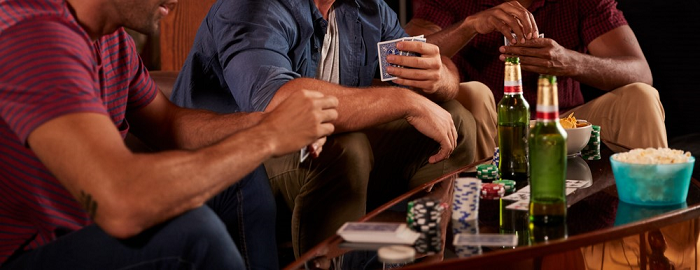
Assuming you don't live in Vegas or near a casino, you can get started playing live by hosting or attending home games. It won't cost much, and you get a great return on investment: you improve your poker skills, have fun, and maybe even improve relationships with family or friends by spending more time with them regularly.
You only need a few things to set up a great home game: some basic equipment, some food and drinks, and some friends to play with.
Equipment
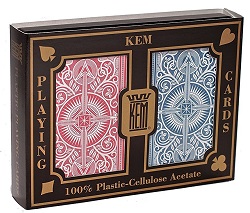
Cards – If you’re going to play poker at home, you’ll need cards. The standard Bicycle cards you’ll find at any supermarket or drug store work fine, but you’ll have a better experience by upgrading to the Copag (better) or KEM (best) cards used in casinos and professional game rooms. If you're playing seriously, you'll want to use cut cards as well.
NOTE: Bridge size, not poker size, is what you want. Narrower than poker size and easier to shuffle and handle, this is what most casinos use. Likewise, opt for jumbo index versus standard; it's easier to read at a glance and standard in casinos.
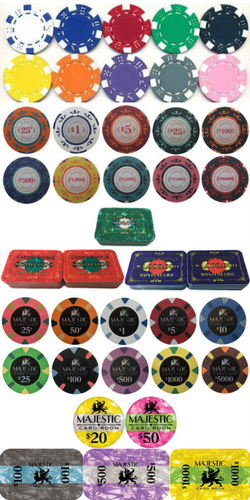
Chips – Whether it’s playing with the kids, hosting a weekly poker night, or getting ready to play in the casinos, you’ll want poker chips. A set of 500 chips is the easy way to go unless you’re hosting a very large home game or tournament (more than 10 players).
The cheapest plastic sets are better than nothing, but the slightly upgraded “clay composite” chip sets are worth the small investment for a better experience.
The next step up are clay composite chips (usually with a metal insert for weight) like the Mint (good) or Milano (better) sets.
For the die-hard James Bond fans, build the set you want with Casino Royale chips and plaques. Whether you want to play cash games with real values ($.25, $1, $5, ,$25 chips) or mimic the tournament in the movie ($5,000, $25,000, $100,000 chips and $500,000 & $1M plaques), you can build the perfect set for you. Use this guide to build the perfect set for the game(s) you want to run.

Table – A specialized poker table or table top will give your best experience.
If you only occasionally play for fun, a folding felt table cover is an easy and inexpensive option.
The next step up is a dedicated lightweight folding poker table. When set up, it’s an excellent full-size poker table, but you can fold it up and put it away when you’re not using it.
Finally, there are the “real furniture” convertible gaming/poker tables for the ultimate home gaming experience. These will have a reversible/removable wooden dining table top, with a felt playing surface on the other side or underneath. They’re costly, but worth it for the enthusiast.
Food and Drinks
Food — Even if you’re not serving dinner, you’ll want some type of snacks or hors d’oeuvres for your game.
Steer away from foods that are sticky or greasy — you don’t want to mess up your cards, chips, or table. Hors d’oeuvres like cheeses and meats, mini-quiches, shrimp and cocktail sauce, etc. are good choices. Pizza, chicken wings, and others are common choices, but take note of the first point; these are better served before, after, or during a break in your game.
Don’t forget to have napkins on hand, regardless of what types of food you serve.
Drinks — Stock up on what words best for your friends. Various beers, cider, wine, liquors, and drink mixers will keep most folks happy.
Don’t forget the non-alcoholic drinks. Sparkling water, soft drinks, club soda, tonic water, coffee, and tea are all good ideas.
Other Consumables — Cigars, pipe tobacco, or shisha if you’re so inclined. Remember the ancillary equipment: ashtrays if smoking is permitted, disposable spittoons if your guests use dip or chewing tobacco, etc.
Friends
If you’re going to play, you’ll need people to play with. Friends, family, and co-workers are all good choices, but use good judgement here.
Co-ed games can either liven up or tone down the game depending on your group dynamics, so proceed with caution. You’ll also need to make clear whether it’s a gentlemen’s evening, a single’s co-ed game, or whether spouses and significant others are invited to properly set expectations beforehand.
With co-workers, be careful. You don’t want folks to feel left out or worry about winning (or losing) to bosses or subordinates. Use your judgement and adjust accordingly.
If money is on the line and alcohol is being consumed — and it’s a safe bet that both are true — you want to ensure that your game stays fun and friendly, not argumentative or nasty, so if you have friends that drink too much, are too competitive, argumentative, homophobic, racist, sexist, or otherwise possible douche-bags, it might be a good idea to refrain from inviting them.
Rules
Setting the rules for your game is important, starting with the game(s) you’ll be playing. Texas Hold’em is defined in this guide and is the most popular game today, but Omaha, 7-card stud, 5-card draw, and more are all options.
Whether or not you’re playing for money, be very clear about whether it’s a cash game or tournament.
If it’s a cash game, the buy-in should be 80–100 big blinds. People may continue to buy-in, but you’ll have to do a good job making sure the buy-ins are appropriate for your group. Everybody must be comfortable losing a buy-in or two — depending on your friends, this might be a $10 buy-in, a $100 buy-in, or more.
In tournament play, you can’t get more chips — you play until one person is the clear winner (you can pay out the winner only, or the top two or three spots for a normal smaller home game). To keep tournaments going properly, blinds must be raised at regular intervals or you’ll have to use a tournament clock, so familiarize yourself with the process.
Make sure you note any time restraints, or lack thereof. If you intend to play until the game naturally ends, make note of this up front. A set end-time is not a bad idea, especially with a larger group. For tournament-style play, make note of how the winners will be determined and how the cash-out will be handled at the end of the evening.
No matter what rules you’re playing under, take a minute before the game to go over them and make sure everybody is on the same page. Go over the hands if necessary for new players, cover the rules of the game, the buy-ins or tournament scheduling, and any time restraints. Once the rules are set and understood, don’t make up rules as you go along, and don’t change them.
Have Fun
You can keep it super casual or dress it up with suits and ties and cocktail dresses (007-themed poker nights). You can run gentleman's only evenings, host separate guys' and gal's tables, or run co-ed games. You can run limit-poker cash games, or winner-take-all tournaments.
Hosting a poker night is an excellent way to step up your own game, especially if you have friends who practice and train poker with you — you will learn each other's tells and bluffs and be able to help each other progress quickly, while having fun doing it.
Final Tips
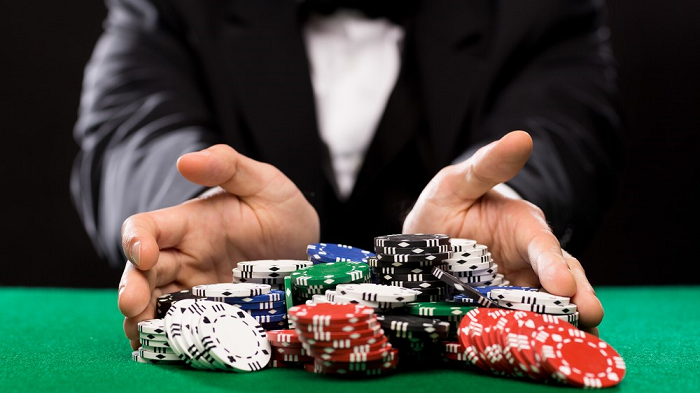
- Log your poker playing. The best apps for this are Poker Journal and Session Logger. You should know how you’re really playing, not just how you think you’re playing.
- Leave your emotions and ego at the door. The goal is to play correct poker and be profitable. Your emotions will only get you into trouble.
- Stay disciplined. The easiest way to lose a lot of money is by loosening up your play with the desire to catch that miracle straight, or because you think your pocket pair deserves to win. Don’t do this.
- Stay in control. If you have an addictive personality, lose control easily, get caught up in the need for "just another hand" or "I'll win it back," or let your ego get you into bad positions, then gambling may not be for you. Do not play poker or gamble if you cannot do it safely, comfortably, and profitably.
By following this progression, you can become a profitable poker player in just a few months.
Many refer to this feeling as a low-grade superpower.
While most people won’t do this professionally, it’s great to know that you can go to Vegas, on a cruise, or to a hot-spot with a casino and recoup the cost of your vacation in an evening or two. Plus, you’ll be living the James Bond lifestyle by besting your opponents and having them foot the bill for your adventures.
PROGRAM
Next up, PHASE 5: Living the Gentleman Spy Lifestyle...
The reason you're here is to live the "Gentleman Spy Lifestyle." Culture, food, drink, money, travel. Put everything you've learned together and embrace your new lifestyle.
